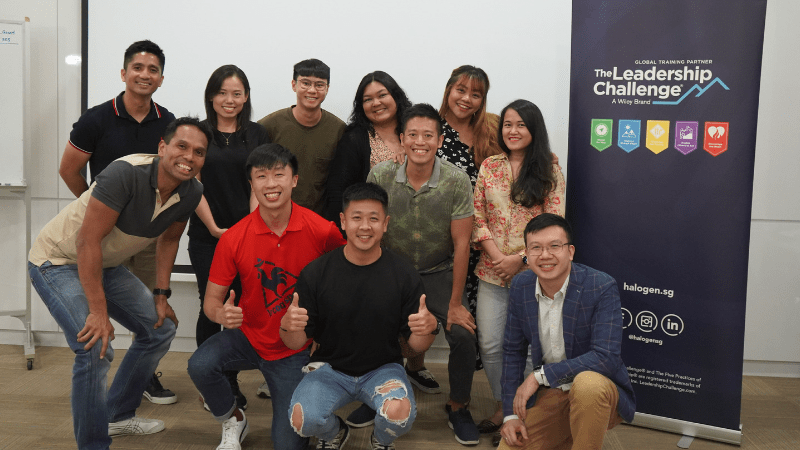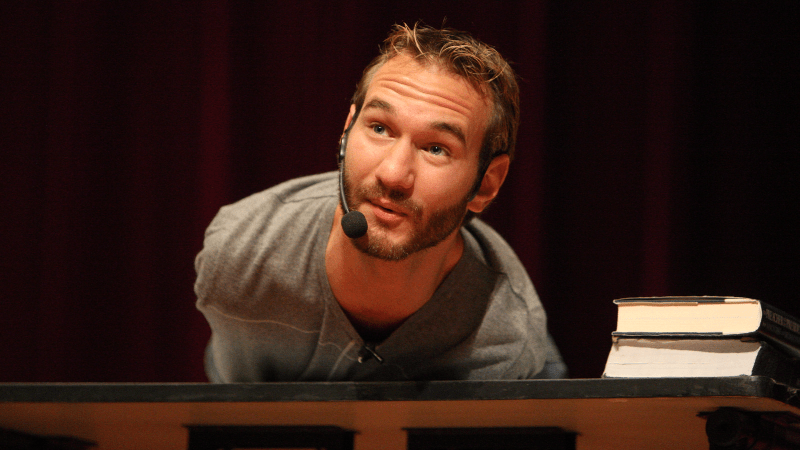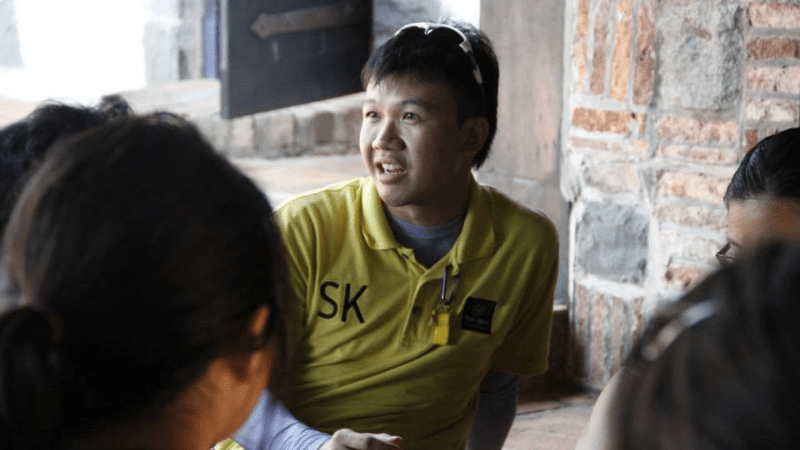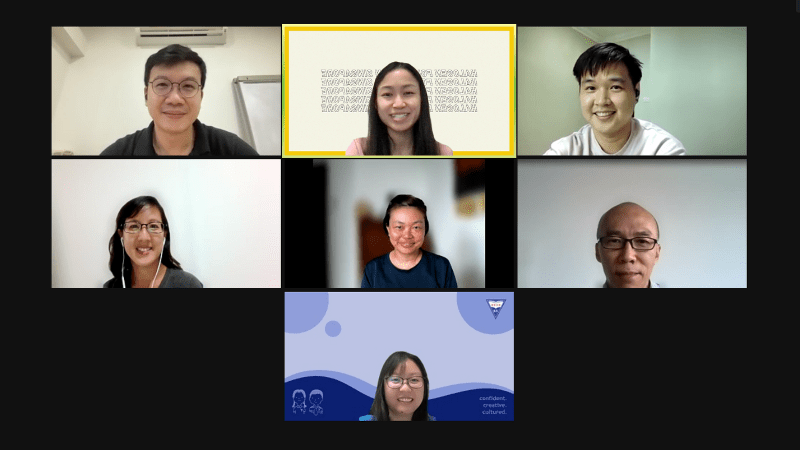Letter From Our CGO: Looking Back On Two Decades Of Youth Development

As Halogen celebrates our 20th anniversary, our Chief Growth Officer, Sean, reflects on the evolution of youth development in Singapore over the past 20 years. Read on to find out more about how the youth landscape has evolved, and how we have been adapting our approach to youth development to make a mark in the lives of young people.
My first foray into youth development was in 2003, in the midst of serving National Service. The world was very different in the early 2000s. In the blink of an eye, I’ve spent close to 2 decades working in youth development — almost as long as Halogen has been around.
In 20 years, the world has become a vastly different place. Technological advances have inadvertently shaped human interactions, behaviours, attitudes and mindsets. Education policies have evolved to tackle the many issues that come with facing an increasingly VUCA (volatility, uncertainty, complexity, and ambiguity) world. This has impacted teaching practices, and each generation of students’ experiences in the classroom.

2000s – 2010s
“Eh I’m playing Runescape, faster hang up!”
Millennials have fond memories of growing up in this era of indestructible Nokia phones, when some households still had to contend between one person chatting on the phone, or another using dial-up internet for activities such as gaming. Compared to the present, there were likely many inefficiencies that we endured, due to a lack of better alternatives.
As each household had only 1 television or computer, families often fought for the right to watch the television or use the computer, eventually learning to share these devices. Youths would often be at the lower end of a traditional family hierarchy; they learned to accept, rightfully or not, their place in the family (and by extension, in organisational settings and in society).
The education and youth development space also looked very different. The use of leadership programmes as a form of enrichment was in its infancy, and the emphasis on education was still largely academic, to prepare students for a “knowledge-based economy”.

Funding and resources were channelled towards schools and programmes deemed to have a higher “return on investment”, and schools with higher ability students generally showed better results, unlocking increased resourcing.
“When I say ‘ok’, you say ‘alright’!”
In those early days, youth and leadership development often took the form of episodic workshops that happened once a year, or a 3D2N camp in a Ministry of Education (MOE) Adventure Campsite that happened once or twice in their entire primary or secondary school life. Students then had to figure out how to exercise their leadership in their day-to-day functional roles or through projects. Some had the privilege of more dedicated guidance from teachers who could afford the mental and emotional bandwidth to mentor the students.
2010s – 2020s
The 2010s were a different era for youths to grow up in. The growing smartphone phenomenon meant that most kids had their own mobile phones even before they entered their teenage years.
Households no longer fought for the right to use devices, as having one’s own device was a norm. It became common for people living under the same roof to consume different content at the same time. On a population-wide level, uniting citizens brought its share of challenges, as technology allowed them to pursue and develop their personal interests, biases and beliefs.

“Eh, what’s your spam?”
Innovations in social media allow users to post life updates that disappear within 24 hours, creating an illusion of online content being impermanent. An increasing obsession with curating a picture-perfect public image emerged, measured by the number of likes, shares and follows garnered. Years of successful cyber wellness education led to youths gatekeeping their social media account followers – with parents often not being part of the chosen circle – and curating different profiles to fit varying social circles and purposes.
Just like the good old days shaped a generation of youth in the 90s and early 2000s, the digital era has also shaped today’s emerging generation.
In the 2010s, there was a greater sense of individualism made possible by early access to personal devices, social media and on-demand streaming services; young people did not face the same need to forgo their media consumption choices, contributing in part to a greater sense of self-importance. With greater convenience offered by apps and services to meet our basic needs, people became more adverse to pursuing things that seem inconvenient, and require hard work.
#bethechangeyouwanttosee
That said, ease of access to information brought its advantages.
Youths became more informed about issues around the world. They saw the plight of fellow human beings in less fortunate parts of the world, and were compelled to take action around issues they care about. They had access to tools needed to organise themselves, and create solutions. Social media gave them a platform to voice out and advocate for issues they care about, albeit subject to the effects of echo chambers and misinformation online.
Likewise, our education system has evolved to better equip youth for the changes that we can anticipate for the future.

Service learning matured with “Values In Action”, helping youths to build deeper awareness and empathy for social issues. Service learning projects became a new avenue by which students learnt to solve problems, work as a team and apply their leadership skills. There was also a paradigm shift towards channelling more resources to schools that needed it most, quantified by the challenges schools faced in producing better student outcomes.
Working with Halogen, some schools embarked on designing and implementing a whole of school approach to student leadership development, breaking away from the traditional medium of episodic workshops or camps. There was good momentum that Halogen was maturing in the right direction in our youth development approaches.
But life threw an unexpected curveball: COVID.
2020 – 2022
#circuitbreaker
The COVID years posed a unique challenge for education and youth development around the world. In Singapore, the circuit breaker period was particularly tough for teachers who had to contend with their own children at home, and students who shared their rooms with siblings who were going through home-based learning at the same time.

#staypositivetestnegative
When in-person lessons resumed, it took time to adjust to the new normal of social distancing measures. Having to interact behind masks raised concerns about missing opportunities to read emotions through facial expressions. Group discussions were limited to small gatherings of 5 to 8 persons, and students lacked opportunities to grow social circles and skills as they could not mingle. Overnight outdoor camps – a highlight for many youths – came to a halt, as students could not partake in mask-off activities in adventure campsite facilities.
The rapidly changing safe distancing and isolation measures also became a source of stress, as mental health and wellness became an important national agenda that trickled down to workplace and educational settings.
With the end of DORSCON Orange, we are returning to a way of life that resembled pre-COVID days. However, with these significant changes to interaction, cohorts of students had their entire school experience with restrictions on learning and social activities. While these students develop a different kind of adaptability and resilience, the impact of these missed opportunities on them in the long run remains to be seen.

Looking Ahead
The future has been described as “troubling” by many Singaporean leaders. The rise of international tensions and a looming threat of competition suggests the potential for wider geopolitical conflict. The economic fallout from the pandemic is emerging, with high inflation and trusted institutions crumbling due to economic factors and poor governance. These challenges foreshadow difficult times ahead for households and businesses in Singapore.
But it’s not all doom and gloom. We’ve seen advancements in technology such as artificial intelligence, blockchain and clean energy that can potentially solve some of our biggest problems like climate change. There will be other advancements that present ample opportunities for those who can position themselves to seize them.
• • •
“The best time to plant a tree was 20 years ago. The next best time is now.”
• • •
Thriving in troubling and uncertain times does not happen automatically: traits like resilience and adaptability take time to build.
To ensure that today’s youth can adapt to an increasingly VUCA future, it is key to help them develop the attributes they need to weather the future, see opportunities, and yet remain grounded in sound values, purpose, and principles. We also want individuals who strive to build a thriving society. To that end, Halogen has adopted an attributes-based approach towards developing young people.
There is no crystal ball to foretell how the future will unfold, but we can learn from the past, and critically evaluate and innovate in our practices toward youth development, to ensure that we raise young people for a better world.
As we mark our 20th year in effecting change in the lives of youth, join us to make your mark by empowering young people, and learn more about our work with youth development here.
